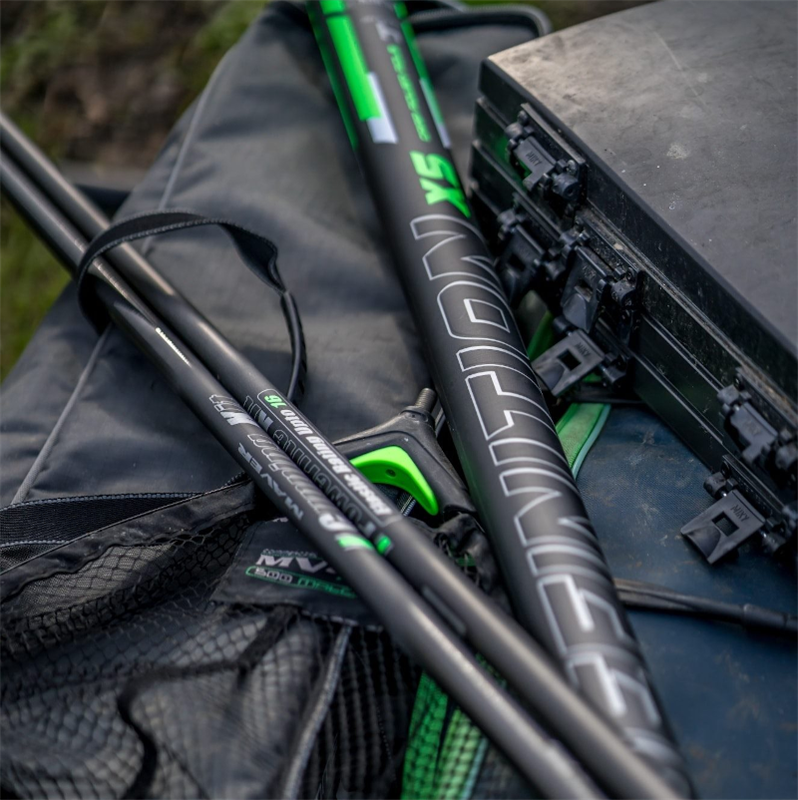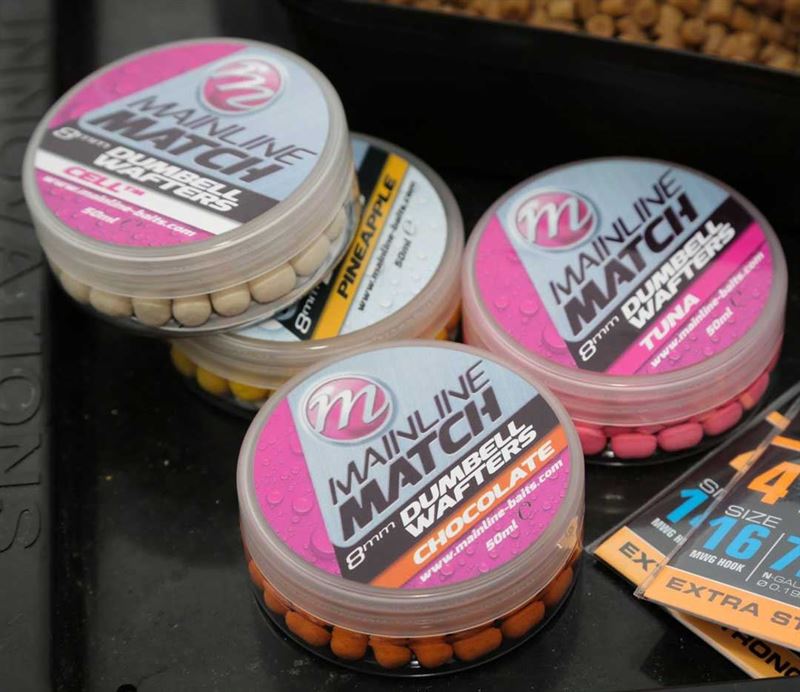Match Fishing Setup: How to Get Started Guide
- By Andy Grenfell
- |
- 29 September 2021
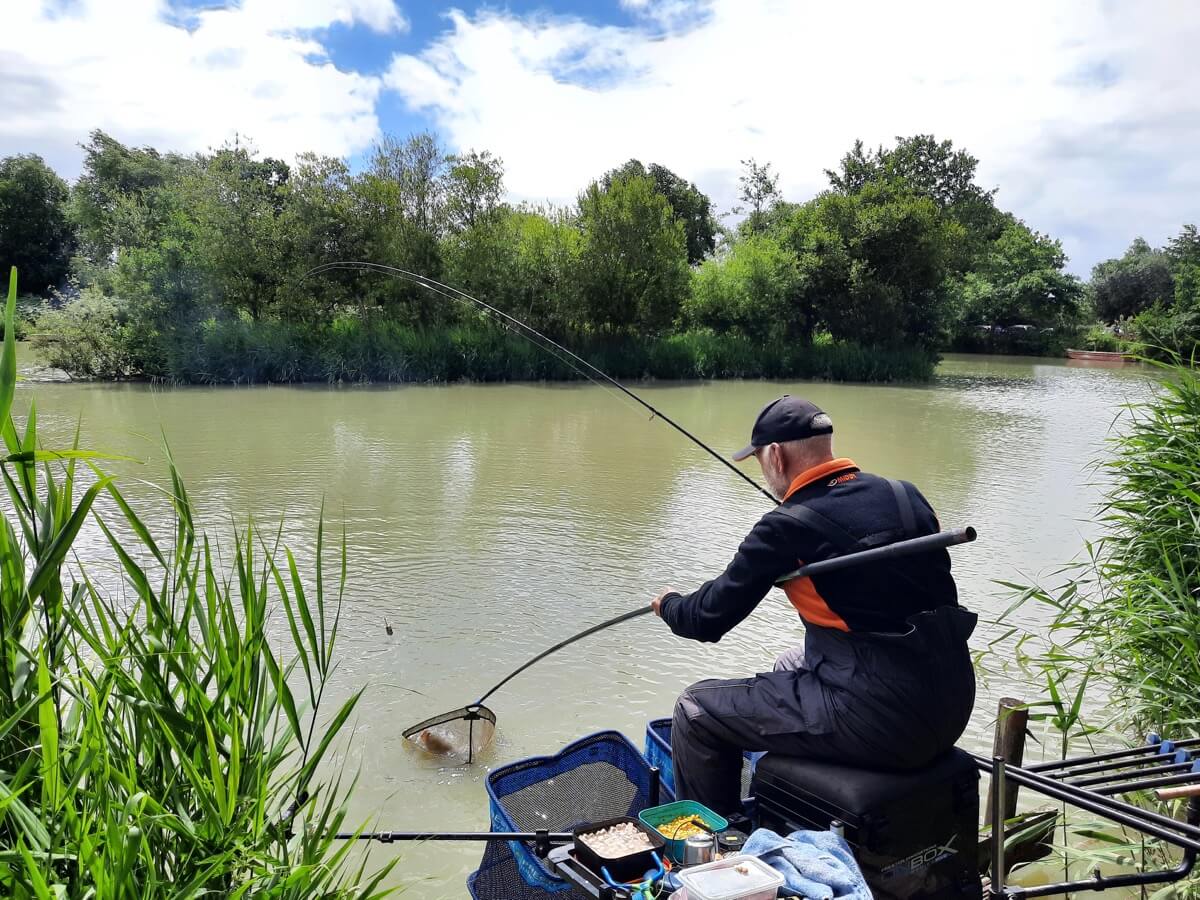
Table of Contents
- How to Start Match Fishing
- What is Match Fishing?
- The best places to go Match Fishing
- What gear do I need for Match Fishing?
- Match Fishing Advice
How to Start Match Fishing
Match Fishing is an exciting branch of angling, and the number of anglers taking up match fishing is on the rise! We asked our resident angling expert to run us through how you can go about starting match fishing and the best way to do it.
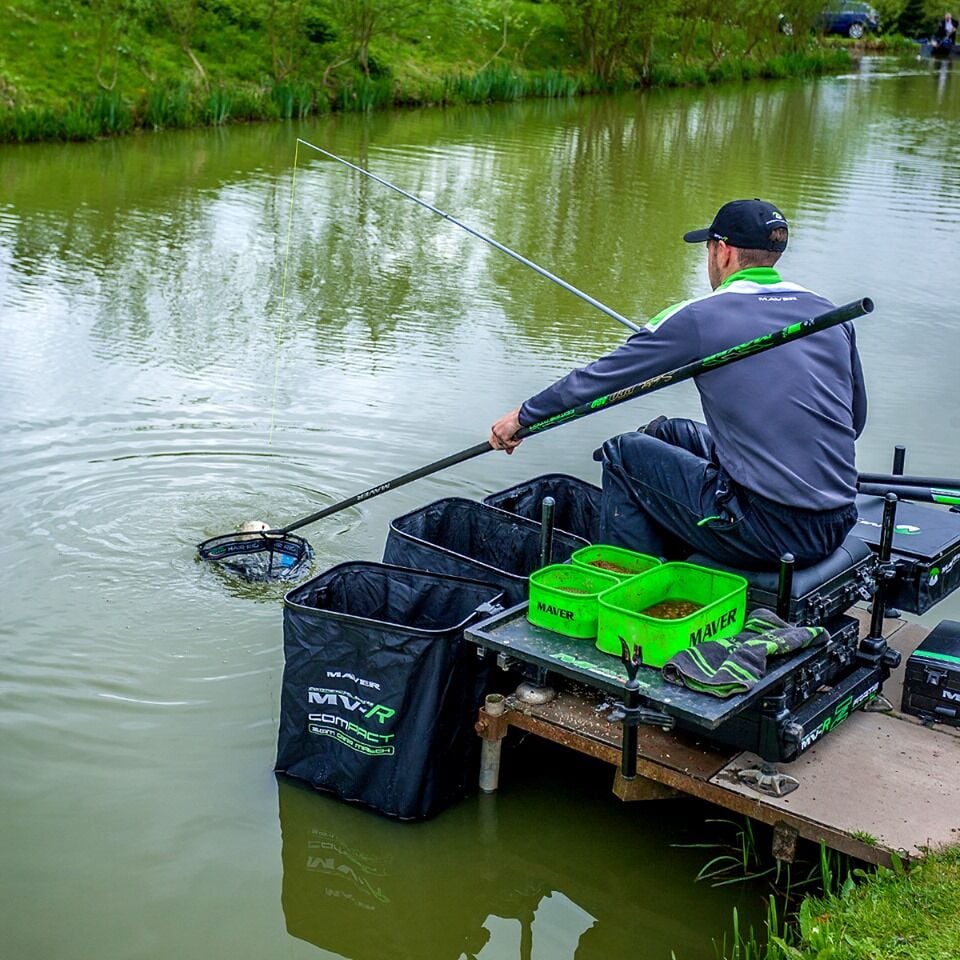
In this guide, I will be looking at match fishing and how you can soon be out there winning some money! We'll look at how matches work, what bait and tackle you need, and the basics of match fishing on commercial venues. First up, how does commercial match fishing work?
What is Match Fishing?
The basic principle of match fishing is to catch the biggest weight of fish in a certain time, usually 4 or 5 hours. There is a bit more to it than that, you need a few essential items and you need to know what to do and what not to do to avoid upsetting your fellow match anglers around you!
Match fishing is on the rise, partly thanks to big-money events like Fish O Mania and Maver Mega Match This. These top events have first prizes of £60,000 or £70,000, and I even saw a feeder fishing series with a top prize of £100,000!!! You only need to win two matches in Fish O Mania, one to qualify for the final and then the final itself.
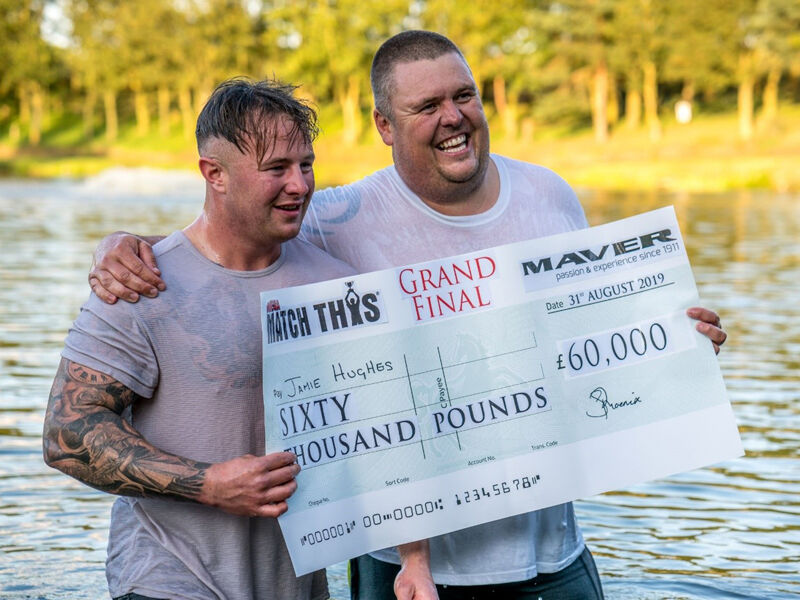
Jamie Hughes with the Mega Match winning cheque!!
The best places to go Match Fishing
So, you have decided you want to start match fishing, GREAT!
My best advice would be to join a local angling club with a busy match fishing section. In the North of England, you won’t have a problem as match fishing is HUGE! Down South, you may have to look a bit further afield. Most commercial carp fisheries also run ‘Open’ matches where anyone can turn up and pay to enter, usually around £20 to include your peg fee (day ticket) and some money into the prize pot.
What gear do I need for Match Fishing?
Surprisingly, very little. My first match was with a feeder rod, a chair, a landing net, and a rucksack full of tackle and bait, and I borrowed a couple of keepnets from the tackle shop at the lake! I did alright too, winning my section! Ah yes, the sections, I’ll come onto that next.
Match Fishing Advice
On the day you arrive at the lake and pay your money. You then decide where you are going to fish, 99% of the time you will pull a number out of a bag, that number is your peg for the day, so if you pull number 20 from the bag, you will be fishing on peg number 20 for the match. You cannot move pegs before or during the match.
The draw will usually be done with lots of bacon rolls and cups of tea, and is a great way to meet with and chat with other anglers.
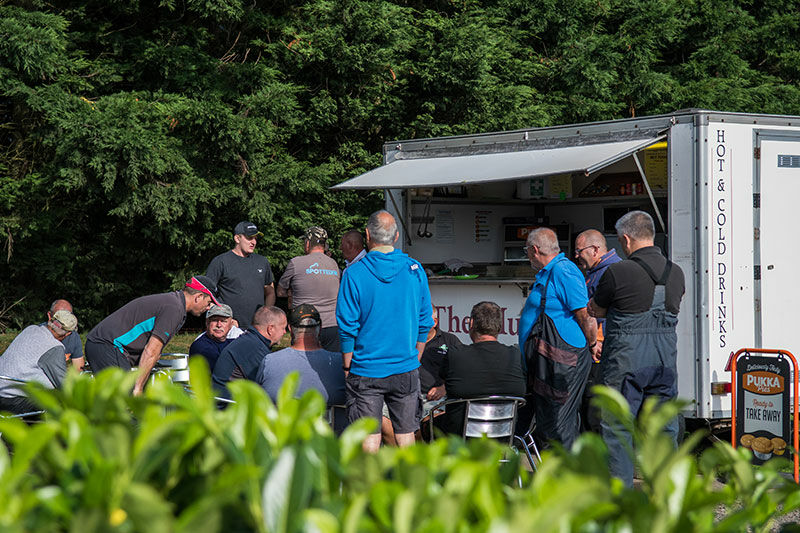
Make sure your tackle and bait are within the rules, and if you are in any doubt, then ASK!
Most matches are divided into sections, with 5 or more anglers in each section. The highest weight in each section is the section winner and wins some money. There will also be a 1st, 2nd and 3rd prize. You cannot be a section winner if you are 1st, 2nd, or 3rd.
So, if there are 4 sections, for example, there will be a prize for the top 3 anglers and a prize for the section winners. In big matches, they may even pay for the top 5 and section runners-up as well. Some areas of the lake will be better than others, and using sections gives everyone a chance to win something.
Let’s say the match starts at 10 am, you then have an hour at least, usually, to get to your peg, set up your fishing gear, and prepare your bait. Don’t be put off by those with bags and bags of kit, all the gear, and no idea! Just set up to fish to your strengths, the majority of match anglers will pole fish, feeder/bomb fish, and waggler fish. Do research on your venue and how the last few matches were won.
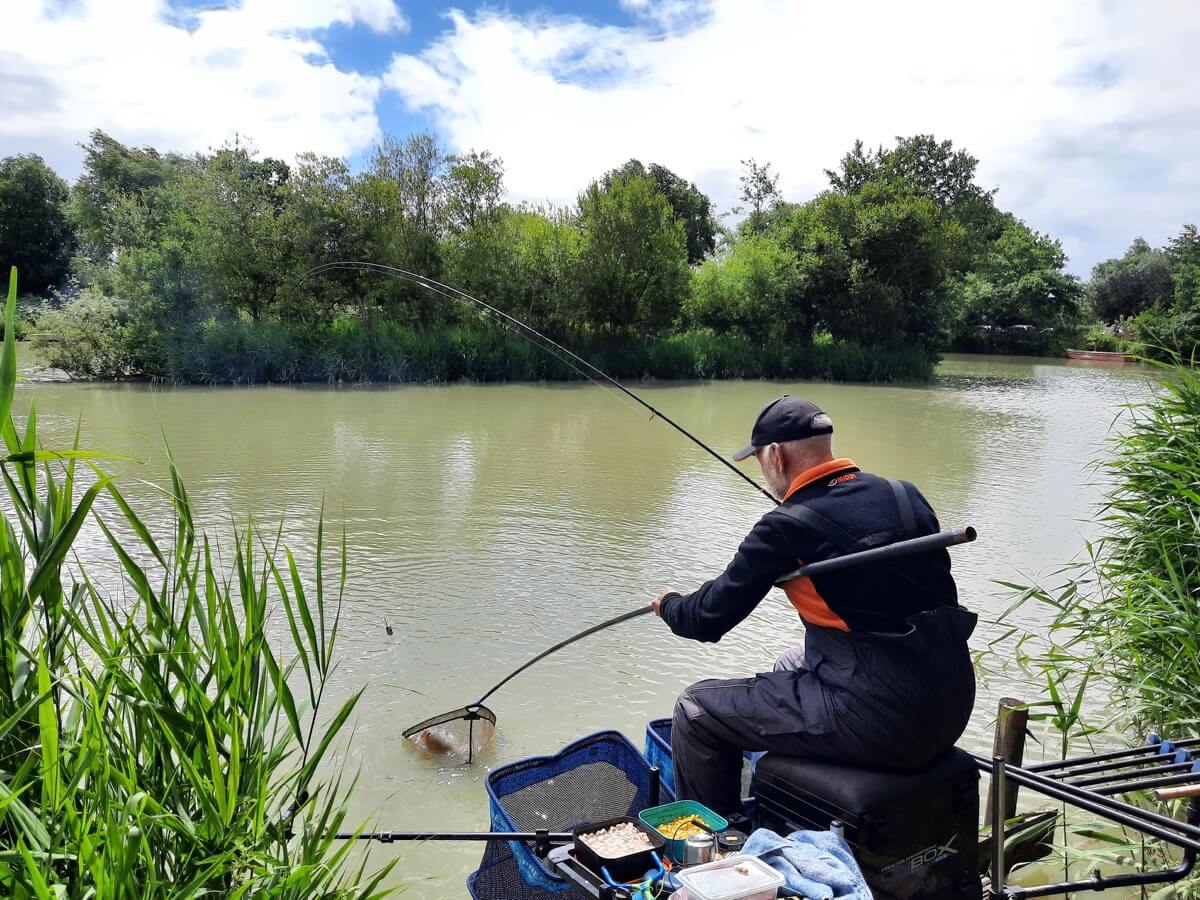
A great peg with an island to cast to and nice-looking margins!
Fish to the features in your peg. If you have an island or other feature in the lake that you can reach, then it may be a hot spot for a method feeder. Lilly pads in the margins will hold fish, it’s much like carp fishing, the feeding fish are usually easy to find, blowing bubbles or clouding up the bottom. Once you have everything set up, pop your keepnets in the water about 15 minutes before the start of the match, decide what line of attack to use first, and have it ready next to you. If you are float fishing, plumb the depths, make sure you have more than one area ready to fish, and you know the depths, clip up your feeder or bomb rods, but do not put any bait in before the start of the match, BIG NO NO!!
Usually, there will be a whistle or a klaxon to signal the start of the match, or you may have someone shout ‘ALL IN!’. This means you can start fishing. It is worth noting that if you think you may be fishing a bit close to your competitor next door, before the match starts, have a chat with them and clarify what your water is; if in any doubt, grab a bailiff or the match organiser to confirm.
So, the ALL IN has happened, and off you go, start fishing! Like I said, fish to your strengths and don’t expect too much to start with, go easy with the bait, little and often is usually best. In an ideal match, I will start fishing long either on the feeder or long pole and finish short or down the edge as the fish come in to feed late in the match. I have gone from near last to first in the last hour of the match because the big fish have come into the margins late on, it happens a lot so have a margin rig set up either on the pole or waggler.

Many venues impose a keepnet limit, so you can only place 60lb of fish in one net. You have to be aware and not go over that limit, or that net may be disqualified and not count. I have seen it happen many times! One way is to roughly estimate each fish and keep a tally in your head, but a much easier way is to use a clicker! They cost peanuts, and I would be lost without mine. When you net a fish and it weighs 3lb, you put 3 clicks on the clicker. I always slightly overestimate the weight of my fish to be safe. Keep checking the clicker, and when it hits 60lb, you need to use another net. It is not uncommon to see multiple nets on prolific venues; I have seen 5 or 6 nets in use before!
At the end of the match, there will be another whistle and a shout of ‘ALL OUT,’ and you must stop fishing immediately and reel in. If you are playing a fish when the match ends you will be able to land the fish and it will count but you must let someone know by shouting ‘FISH ON’ and that way no foul play will be suspected!
Pack all your gear away and leave the keepnets in the water, someone will come around and do the weigh-in, usually the rest of the anglers will follow the scales, especially if they think they might win!
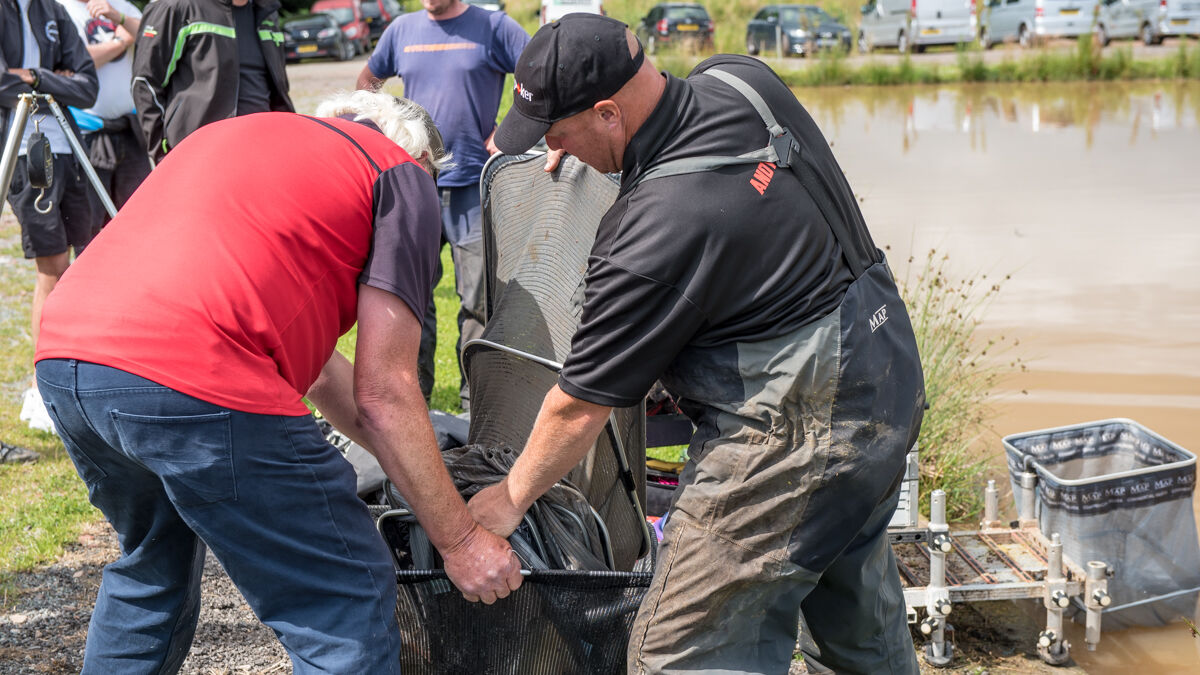
Someone will help you weigh the fish, don't worry!
When instructed to do so, take the first net out of the water, gathering up the net as you go, you can ask for help if you are new and they will be glad to help and show you the best way to do it, transfer the fish into the weight sling and the weight will be read out to you for that net. Any other nets are then weighed in and the final total will be read out to you!
If you follow the scales around a few times, you’ll soon see how it all works.
Back in the clubhouse or tackle sho,p the weights will be tallied up and the winners will receive their winnings!
Match fishing is ridiculously addictive, and I love it!






